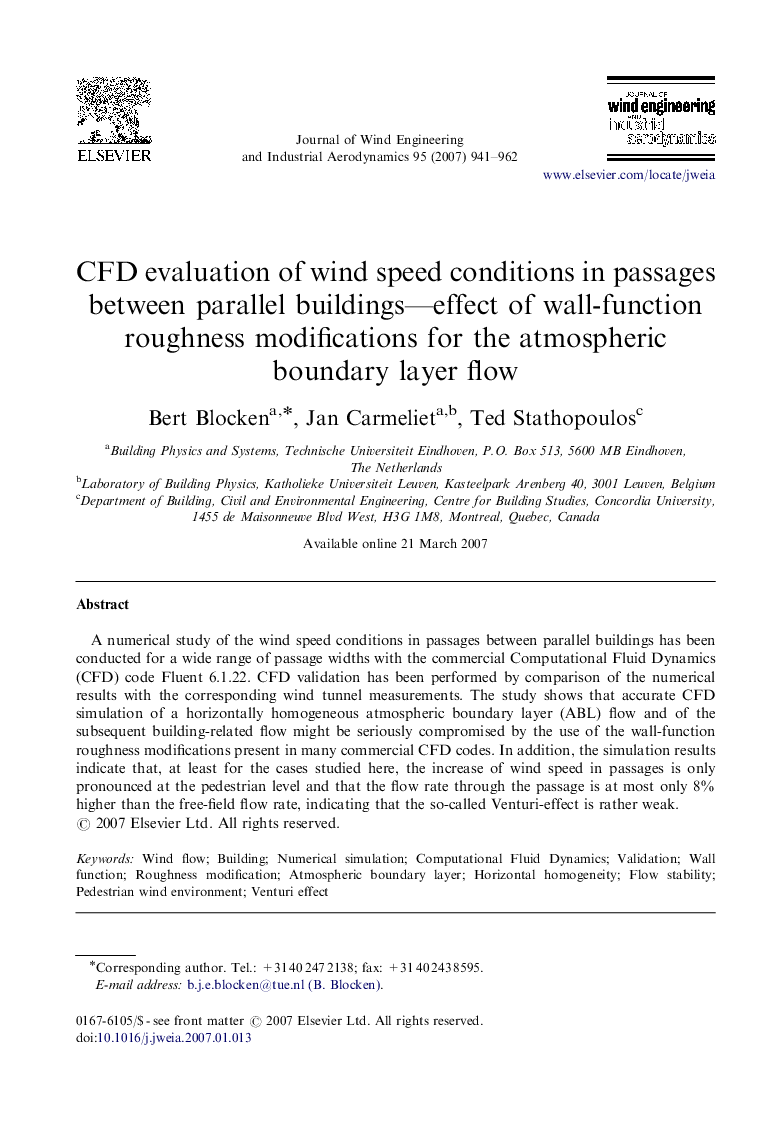| Article ID | Journal | Published Year | Pages | File Type |
|---|---|---|---|---|
| 293514 | Journal of Wind Engineering and Industrial Aerodynamics | 2007 | 22 Pages |
A numerical study of the wind speed conditions in passages between parallel buildings has been conducted for a wide range of passage widths with the commercial Computational Fluid Dynamics (CFD) code Fluent 6.1.22. CFD validation has been performed by comparison of the numerical results with the corresponding wind tunnel measurements. The study shows that accurate CFD simulation of a horizontally homogeneous atmospheric boundary layer (ABL) flow and of the subsequent building-related flow might be seriously compromised by the use of the wall-function roughness modifications present in many commercial CFD codes. In addition, the simulation results indicate that, at least for the cases studied here, the increase of wind speed in passages is only pronounced at the pedestrian level and that the flow rate through the passage is at most only 8% higher than the free-field flow rate, indicating that the so-called Venturi-effect is rather weak.
